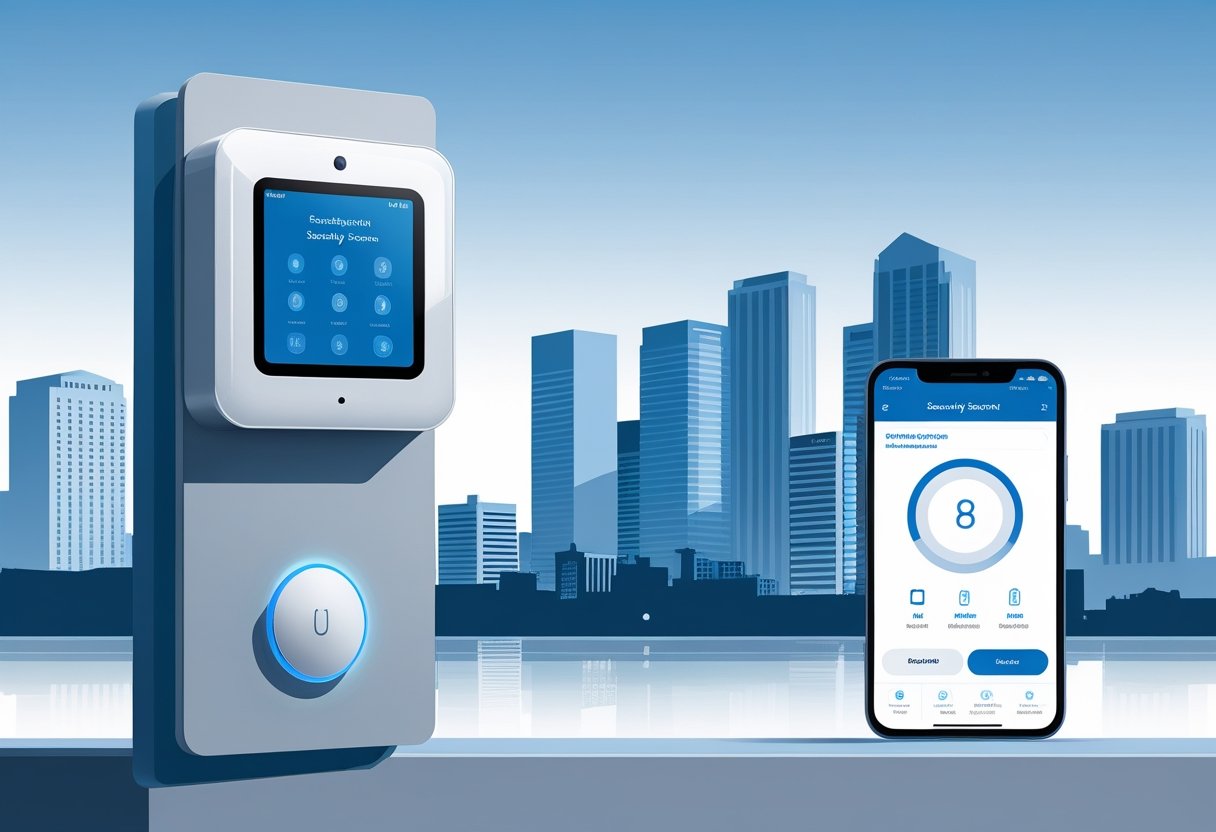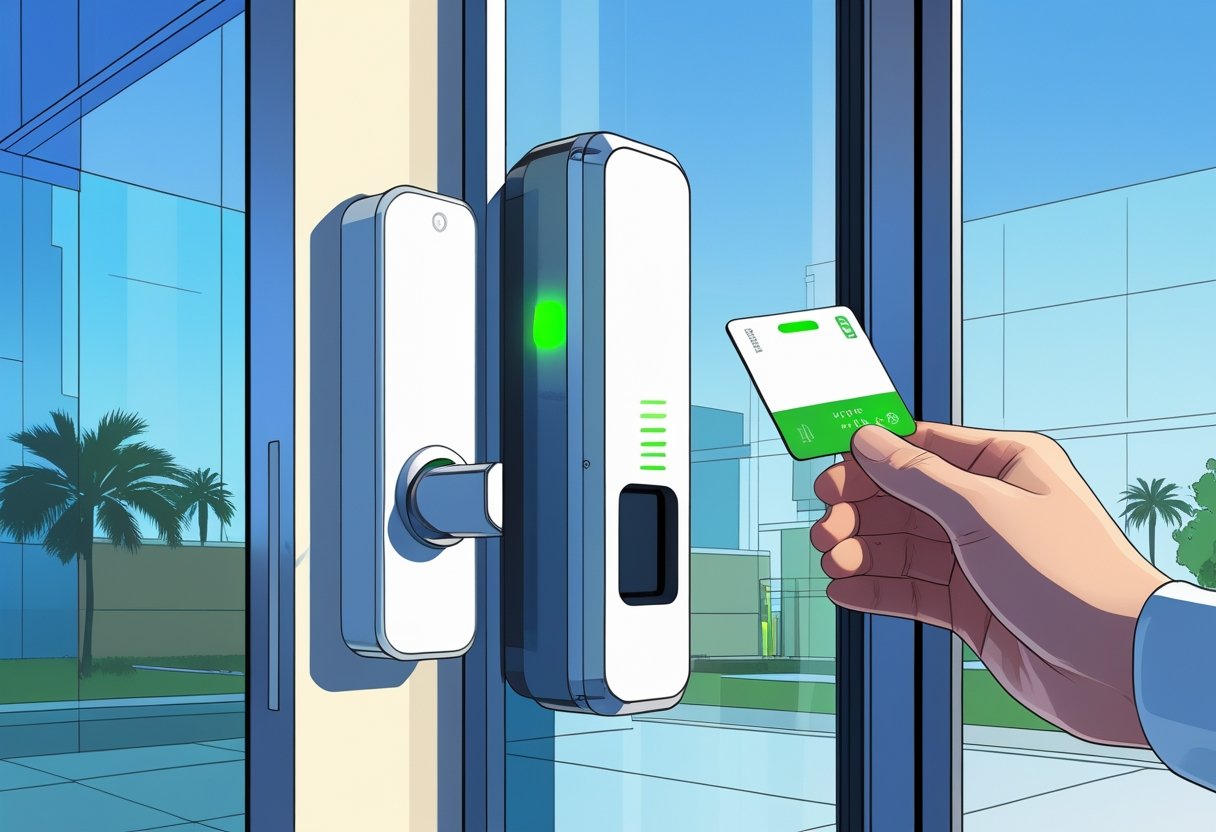Emergency lighting is a crucial feature in any property, ensuring safety during power outages and emergencies. It provides illumination along escape routes, enabling occupants to exit quickly and safely, while also complying with important building safety regulations. In the greater Houston area, understanding the importance of emergency lighting can help you meet legal requirements and enhance the safety of your property.
Neglecting emergency lighting can lead to severe consequences, including penalties for non-compliance and increased risks during emergencies. Properties such as commercial buildings, schools, and hospitals must adhere to specific regulations to ensure that their emergency lighting systems are effective and reliable. By prioritizing safety and compliance, you not only protect those within your property but also maintain your standing within the community.
Investing in an appropriate emergency lighting system is not just a legal obligation; it is also a fundamental aspect of responsible property management. Ensuring that your property is equipped with adequate emergency lighting can make a significant difference when it matters most, safeguarding lives and assuring peace of mind for you and your tenants.
Understanding Emergency Lighting
Emergency lighting is essential for ensuring safety during power outages or emergencies. It provides illumination that guides occupants toward exits and safety equipment. Understanding its components, types, and critical performance metrics can help you assess and implement effective emergency lighting systems in your property.
Components of Emergency Lighting Systems
Emergency lighting systems consist of various components designed to operate during power failures. Key elements include light fixtures, battery systems, and control panels.
- Light Fixtures: These provide the necessary illumination during emergencies. They can be standalone exit signs or integrated into existing lighting.
- Battery Systems: They act as backup power sources, ensuring that lights remain operational when regular power is lost. Options include battery backup systems and central battery systems.
- Control Panels: These manage the operation of the emergency lights and monitor battery status.
Proper integration of these components is crucial for effective emergency illumination.
Types of Emergency Lighting
There are several types of emergency lighting systems to consider, each serving different purposes:
- Standby Lighting: This system provides general illumination in the event of a power failure, maintaining basic visibility.
- Emergency Egress Lighting: This type remains illuminated during outages, helping occupants navigate safe exit routes.
- Exit Signs: These are critical for indicating the safest paths to exits. They must remain visible and clearly marked.
- Central Battery Systems: This approach utilizes a central unit to distribute power to multiple fixtures, benefiting larger buildings.
Choosing the right type depends on your property’s needs and layout.
Critical Performance Metrics
To ensure the effectiveness of your emergency lighting, consider the following key performance metrics:
- Illuminance Levels: Measure the light output in lux to guarantee sufficient visibility. Regulations often dictate specific illuminance levels for different areas.
- Color Rendering Index (CRI): A higher CRI provides better color accuracy in emergencies, aiding quick recognition of escape routes.
- Battery Life: Evaluate battery backup time to confirm that emergency lights last long enough for safe evacuations.
Regular testing and maintenance of these metrics are essential to ensure reliability when needed most.
Safety Standards and Regulations
Understanding the safety standards and regulations for emergency lighting is crucial for ensuring compliance and safety in your property. Key entities like the NFPA and OSHA set forth essential guidelines to help maintain effective emergency lighting systems. Local compliance can also impact building safety and avoidance of fines.
NFPA and Life Safety Code Requirements
The National Fire Protection Association (NFPA) establishes essential guidelines through the Life Safety Code (NFPA 101). This code outlines requirements for emergency lighting, ensuring that illumination is provided during an emergency.
Emergency lighting systems must emit a minimum of 1.07 lux (0.1 foot-candles) along exit paths at floor level. Your building should have appropriately placed emergency lights to direct occupants safely during an evacuation.
Regular maintenance checks are necessary, as per NFPA regulations, to ensure all systems function correctly when needed. Adhering to these guidelines can significantly enhance safety in your property.
OSHA and IFC Guidelines
The Occupational Safety and Health Administration (OSHA) also mandates specific requirements for emergency lighting under the General Industry Standards. These rules emphasize that all exit routes must be sufficiently illuminated so that individuals with normal vision can navigate safely.
According to the International Fire Code (IFC), emergency lighting should be installed in all commercial buildings. The IFC further outlines that light sources must remain functional during emergencies, contributing to safe egress routes for occupants. Compliance with OSHA and IFC standards helps ensure worker safety and reduces liability.
Local Compliance and Fines
Local regulations regarding emergency lighting can vary widely depending on your jurisdiction. Always check with local authorities to understand specific requirements that may apply to your property in the greater Houston area.
Non-compliance with these regulations can result in significant fines and legal repercussions. Regular inspections by local fire marshals may also occur to enforce adherence to emergency lighting standards. It is essential to maintain documentation of inspections and maintenance to demonstrate compliance effectively.
Designing Emergency Lighting Systems
When designing emergency lighting systems, focus on ensuring adequate illumination in critical areas, particularly escape routes and high-risk workspaces. Attention to specific lighting requirements can significantly enhance safety during emergencies.
Planning for Adequate Illumination
Begin by assessing the layout of your property. Identify all potential exit points and high-traffic areas where individuals may congregate during an emergency.
In this planning phase, consider the minimum illuminance levels required by local codes. These standards often dictate how brightly emergency areas need to be lit to ensure safe evacuation.
Utilize a combination of fixed and portable emergency lighting options to ensure that every part of the exit route is accounted for. This can include wall-mounted fixtures and floor-level markers that guide individuals toward safety.
Escape Route Lighting Considerations
When it comes to lighting escape routes, the focus should be on visibility and clarity. Place fixtures at key points, such as doorways and corners, to minimize confusion.
Consider using self-illuminating exit signage that remains lit during power failures. This signage should be placed above exit doors to ensure they are easily seen.
Additionally, ensure that all escape routes meet ADA guidelines for accessibility, which may influence the placement and type of lighting used. Regular testing and maintenance of the lighting system are crucial to guarantee functionality when needed most.
High-Risk Area Lighting Solutions
For high-risk task areas, specialized lighting solutions are necessary. These may include warehouses, kitchens, or laboratories where the potential for hazards is elevated.
Use high-intensity lighting that automatically activates during an emergency to illuminate these spaces. It’s essential to ensure that these lights are strategically positioned, addressing both parking lots and service areas, where the risk is magnified.
Furthermore, consider incorporating motion-sensor technology within these areas. This allows lights to activate in the event of an emergency, providing immediate illumination. Regular audits of these lights can help maintain compliance with safety standards tailored specifically for your jurisdiction.
Implementation and Maintenance
Effective implementation and maintenance of emergency lighting systems are essential for ensuring safety during power outages and emergencies. Proper installation and routine checks are critical components in maximizing the reliability of these systems.
Installing Emergency Lighting Systems
When installing emergency lighting systems, adherence to local building codes is crucial. Begin by assessing the layout of your property to identify key evacuation routes and areas requiring illumination.
Choose appropriate types, such as maintained mode or standby lighting systems, based on your facility's needs. Central battery systems offer a centralized solution for powering multiple lights, while backup lighting can ensure continued operation during power failures.
Ensure fixtures are strategically placed to provide clear visibility for safe exit, aiming for uniform light distribution. Proper mounting and secure wiring are also essential to prevent functional issues. Finally, consult with a professional familiar with these systems in the greater Houston area for tailored expertise.
Routine Inspection and Testing
Routine inspections and testing of emergency lighting systems are vital to guarantee functionality. Schedule tests monthly and annually, following guidelines set forth by the National Fire Protection Association (NFPA).
During inspections, verify that all fixtures illuminate correctly and are free from obstructions. Self-testing systems can simplify this process, automatically checking functionality and reporting issues.
Use a checklist to ensure every light is examined and any concerns are promptly addressed. Documentation of inspections is also important for compliance and for reference during safety audits. Regular testing helps prevent malfunctions when you need the equipment most.
Maintenance Best Practices
Regular maintenance is crucial for maximizing the lifespan and reliability of your emergency lighting systems. Maintain a routine cleaning schedule to dust and inspect fixtures, ensuring they remain unobstructed.
Keep records of all maintenance activities, including lamp replacements and repairs. Replacement of bulbs should be done promptly to avoid downtime.
It's also essential to monitor battery health, particularly in central battery systems. Follow the manufacturer's guidelines for battery replacement, and create a preventative maintenance plan that outlines routine checks and documentation of tasks performed. This proactive approach minimizes the total cost of ownership and ensures ongoing compliance with safety regulations in your facility.
Special Considerations for Building Types
Emergency lighting needs vary significantly depending on the building type and its specific functions. Understanding these differences ensures compliance with regulations and provides safety for occupants. Below are crucial aspects to consider for various properties.
Emergency Lighting in Commercial Properties
In commercial buildings, emergency lighting systems serve a critical role. These properties often accommodate high occupancy levels, requiring clear and reliable means of egress for safe evacuation during emergencies.
Key points to address include:
- Installation Locations: Emergency lights must be placed along exit routes and in essential areas, such as stairwells and near emergency exits.
- Brightness Requirements: Lights should meet a minimum illumination level of 54 lux, especially in pathways and exit areas.
- Maintenance: Regular inspections, typically monthly, ensure the proper functioning of emergency lights. Documentation of these checks is also vital.
Focusing on these elements helps ensure the safety of staff and visitors in commercial environments.
Regulatory Variations by Building Use
Regulations governing emergency lighting vary based on the intended use of the building. Different types of facilities, such as hospitals, schools, and office buildings, have distinct regulatory frameworks.
- Specific Codes: Familiarize yourself with local lighting regulations. For example, hospitals may require more rigorous standards due to the presence of vulnerable populations.
- Adaptive Systems: Some building types may benefit from adaptive emergency lighting systems, which adjust brightness based on occupancy and natural light conditions.
- Compliance: Ensure your systems align with the National Fire Protection Association (NFPA) standards, which detail specific requirements for various building uses.
Understanding these regulatory nuances allows you to tailor your emergency lighting systems effectively.
Frequently Asked Questions
Emergency lighting systems are essential for ensuring safety during power outages and emergencies. Understanding the legal requirements, standards, and maintenance practices associated with these systems is crucial for property owners.
What are the legal requirements for emergency lighting in commercial buildings?
In commercial buildings, emergency lighting must comply with local and national regulations. These regulations generally require that emergency lighting systems provide adequate illumination during evacuations, enabling safe exit routes. Additionally, emergency lights must remain operational for a specified duration, often at least 90 minutes, to ensure safety.
How does NFPA define emergency lighting standards?
The National Fire Protection Association (NFPA) outlines specific standards for emergency lighting in NFPA 101, the Life Safety Code. These standards emphasize the importance of reliable illumination for safe egress during emergencies. The code specifies necessary lighting levels and the regular testing of systems to ensure operational readiness.
What are the building code specifications for emergency lighting systems?
Building codes specify various requirements for emergency lighting systems, including fixture placement, lumen output, and battery backup. These specifications ensure that all exit paths and high-risk areas are adequately lit. Compliance with local building codes is essential for securing occupancy permits and ensuring tenant safety.
What are the emergency lights in buildings commonly referred to as?
Emergency lights in buildings are commonly referred to as exit lights or emergency exit signs. These fixtures are crucial in guiding occupants to safety during emergencies. They serve both as illuminative aids and as markers for exit routes.
What are OSHA's regulations regarding emergency lighting?
The Occupational Safety and Health Administration (OSHA) mandates that emergency lighting be installed in areas where employees work. According to OSHA, lighting must be sufficient to allow safe egress during power failures. Adherence to these regulations is vital for maintaining workplace safety standards.
How frequently should emergency lighting systems be tested and maintained?
Emergency lighting systems should be tested at least monthly to ensure functionality. This includes visually inspecting fixtures and performing operational tests. Additionally, comprehensive maintenance checks are recommended annually to address potential issues and ensure compliance with safety standards.
.svg)



.svg)


.svg)



